The AMD Radeon R9 380X Review, Feat. ASUS STRIX
by Ryan Smith on November 23, 2015 8:30 AM EST- Posted in
- GPUs
- AMD
- Radeon
- Asus
- Radeon 300
Overclocking
Finally, no review of a video card would be complete without a look at overclocking performance.
With ASUS setting the STRIX R9 380X’s factory clockspeed to 1030MHz – 60MHz ahead of AMD’s reference clock of 970MHz – ASUS is already significantly eating into the headroom available on the card, and the 1050MHz OC mode further cuts into that. We don’t have any voltage control (we can’t even read the voltage) so the card can only be overclocked as far as the Tonga GPU can go on default voltage. Meanwhile ASUS hasn’t touched the memory clockspeed at all, which should mean there’s a bit more headroom there to play with.
| ASIS STRIX R9 380X Overclocking | ||||
| ASUS STRIX R9 380X OC (Stock) | ASUS STRIX R9 380X (OC) | |||
| Boost Clock | 1030MHz | 1100MHz | ||
| Memory Clock | 5.7Gbps | 6.4Gbps | ||
| Power Limit | 100% | 115% | ||
Ultimately we were able to push the STRIX R9 380X OC from 1030MHz to 1100MHz on the GPU, a 70MHz (7%) overclock. I fully expect that Tonga could do better with more voltage – and the ASUS cooler could keep up – but at the same time it would take a bad power efficiency situation and make it worse. Otherwise memory overclocking was a bit more fruitful, as we were able to push the card from 5.7Gbps to 6.4Gbps, a 700Mbps (12%) performance increase. Note that relative to the original 7970, the R9 380X has a narrower 256-bit memory bus, so if there are any situations where GCN 1.2’s color compression technology can’t make up the difference, a memory overclock may help to close the gap.
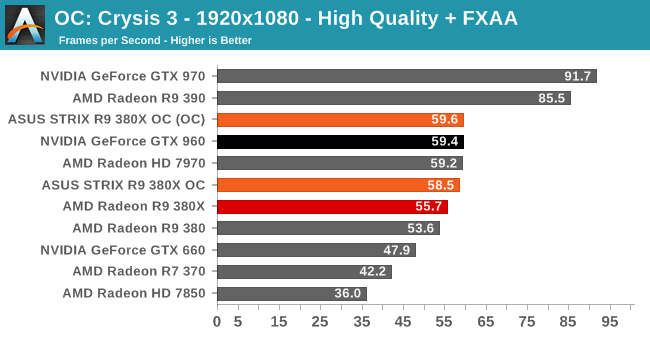
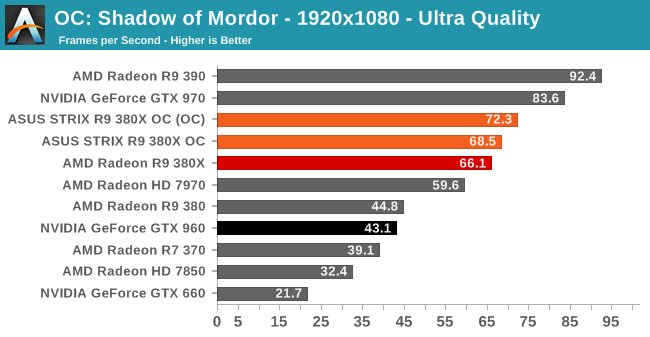
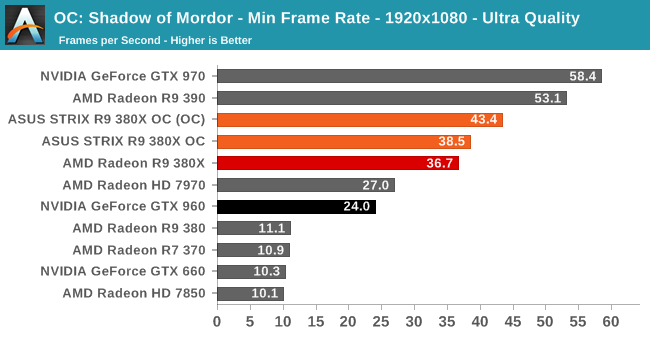
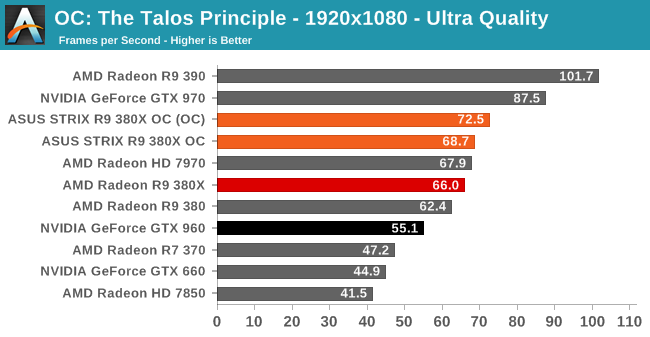
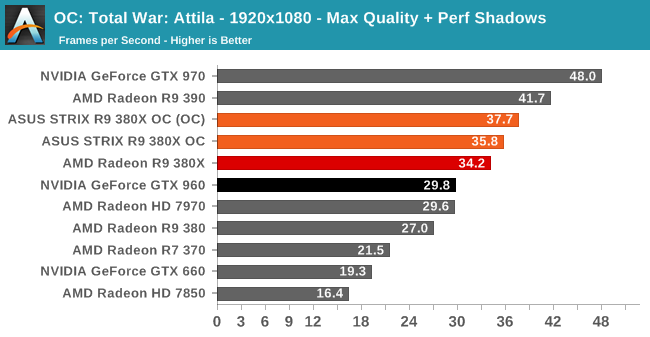
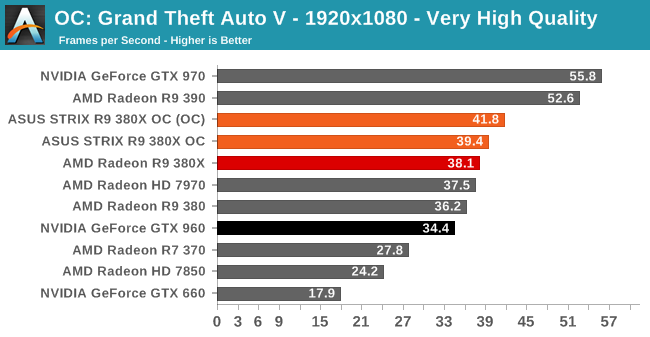
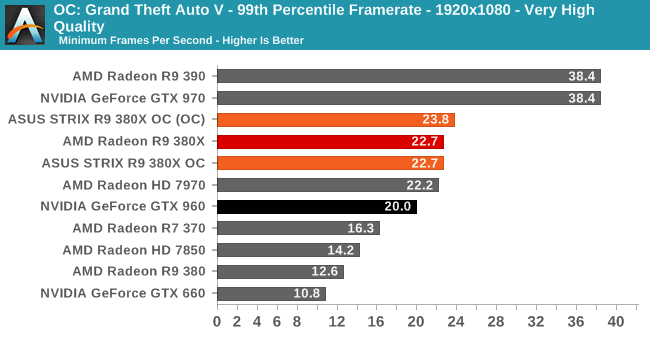
Overall overclocking is good for another 5% performance increase over the STRIX R9 380X's factory overclock. Though enough to be significant, as we guessed base upon the clockspeeds, ASUS has already tapped much of the overclocking headroom available on the card. For reference clocked cards on the other hand, assuming that they can overclock similarly well, this means they can look forward to a total of 10% or so from overclocking.
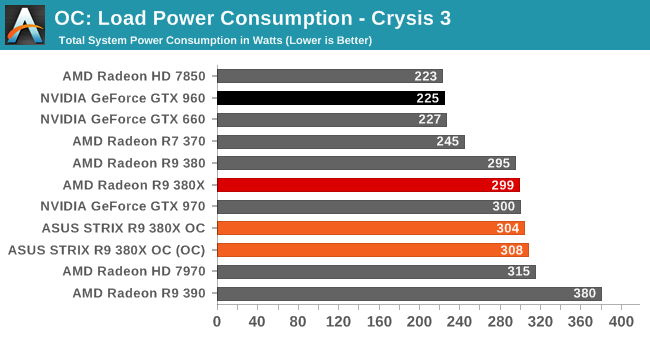
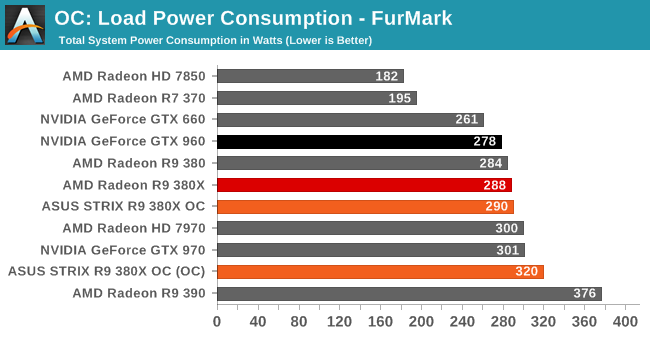
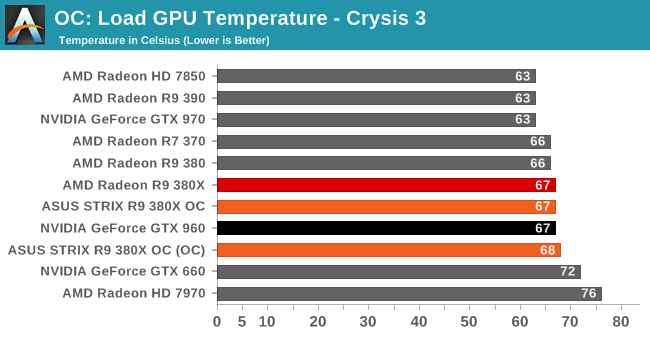
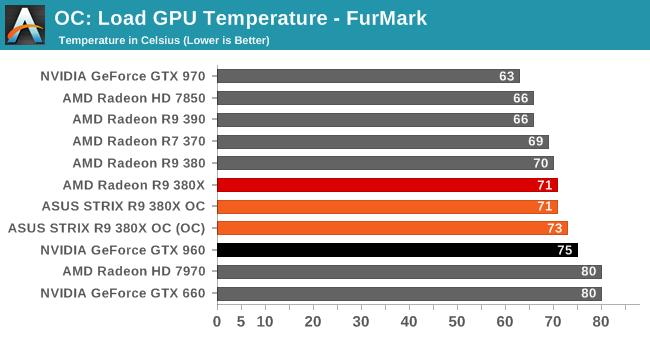
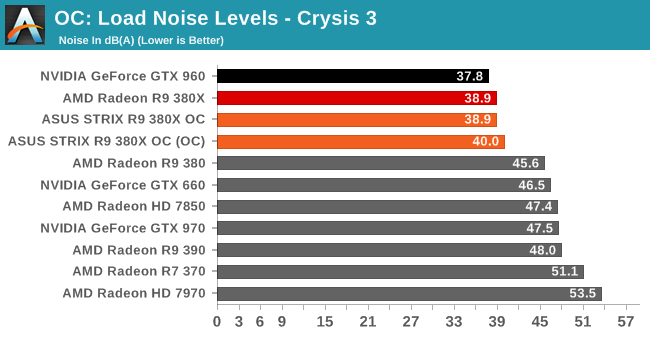
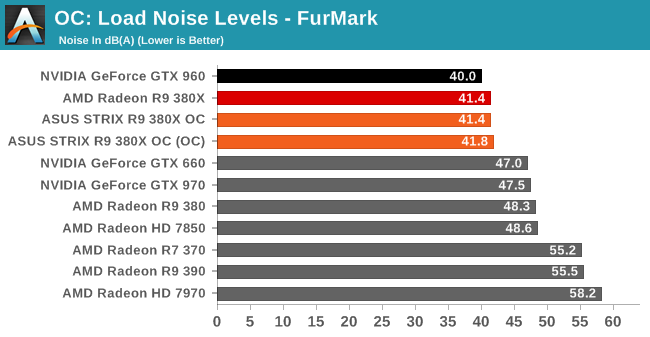
Since we can't overvolt, the power/temp/noise impact of overclocking is limited. Under gaming workloads the difference is a handful of watts and a nothing for temperature or noise. Otherwise FurMark, with the higher power target, pushes the STRIX card a bit harder, but everything still remains within reason.










101 Comments
View All Comments
Kalessian - Monday, November 23, 2015 - link
The Crysis 3 numbers don't make sense to me, vsync get left on or something?Ryan Smith - Monday, November 23, 2015 - link
Nope. V-sync is off, and I can vouch that the instantaneous framerate does go over 60fps. That's just an amusing case of cards at this performance segment coming very close to averaging 60fps.DanNeely - Monday, November 23, 2015 - link
For the price matchup table on the first page, the 4GB 960 starts at $220 vs $180 for the 2gb model. NVidia might not be splitting them apart by model number; but pricewise it has cards at both slots.tviceman - Monday, November 23, 2015 - link
Current cheapest 4gb GTX 960 on newegg (USA) is $180 w/o rebates. Next cheapest is $185 w/ additional $20 MIR. Next cheapest is $199 w/o rebate. Next cheapest is $210.There are plenty of 4gb GTX 960 cards for much less than $220.
nathanddrews - Monday, November 23, 2015 - link
So... how much longer is AMD going to pretend that HDMI 2.0 doesn't exist? DP adapters are still MIA.extide - Monday, November 23, 2015 - link
Next gen GPU's dude...medi03 - Monday, November 23, 2015 - link
Cause dat 4k resolution is golden on card that can barely push 1440p...nathanddrews - Monday, November 23, 2015 - link
Irrelevant:1. Most 4K TVs that can do 4K60 4:4:4 over HDMI 2.0 can also do 1080p120, native input.
2. Games like Dota 2, LoL, and nearly all games prior to 2013 can be play 4K no problem by GPUs like this.
3. 4K60 video (YouTube, GameStream, etc.)
SpartyOn - Monday, November 23, 2015 - link
This card is no better, and actually probably worse, than my three year old GTX 770 4GB and at best is equal to a GTX 960, which can be had for easily under $200.Is AMD even trying anymore?
looncraz - Monday, November 23, 2015 - link
Did you read the same review I did?The 380X is often 15% faster than the 960, and sometimes 30% faster... for average FPS. When it comes to the 99th percentile or minimum framerates there's just no comparison, 380x lays the smackdown on the 960.
Sometimes the 960 can do quite well, but it usually loses by quite a bit.
Your 770 is slower than the 960in some games, a bit faster in others. It is not as fast as the 380x, which is the same approximate performance of AMD's old 7970, which is a nearly four year old card.